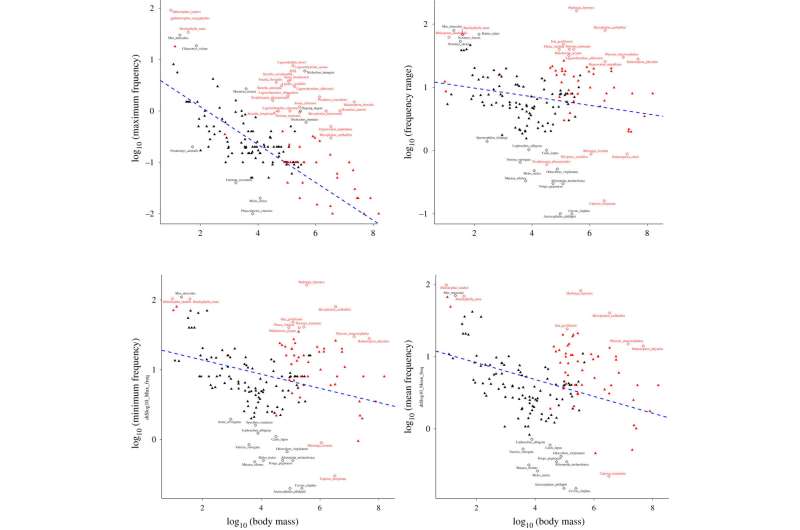A new approach to identify mammals good at learning sounds

Why are some animals good at learning sounds? Did this skill appear when animals started "faking" their body size by lowering calls? In a new study on a wide range of mammals, Andrea Ravignani from the Max Planck Institute for Psycholinguistics and Maxime Garcia from the University of Zurich revisit this question. Surprisingly, many animals who are skilled vocalists (such as dolphins and seals) actually sound higher than would be expected for their body size.
Some animals—such as red deer—sound bigger than they really are. This means that their calls are lower than you would expect based on their body size. Biologists think that faking body size in such a way might be a strategy to impress the other sex. In a recent study, Garcia and Ravignani noticed that animals who can fake their body size by changing their calls also tend to be good at learning sounds—an ability known as vocal learning. Could natural selection be the driving force behind both faking body size and learning sounds? If true, this idea would have important implications for the evolution of speech.
To further explore the relationship between faking body size and vocal learning, Ravignani and Garcia expanded their earlier analyses of a wide range of mammals. Would the relation between faking body size and learning sounds turn out to be a systematic evolutionary pattern?
What they found was surprising. Contrary to expectations, most vocal learners—such as dolphins, whales and seals—sounded higher than you would expect based on their body size, not lower. Ravignani explains: "There might be an alternative evolutionary scenario in vocal learners, where selective pressures favor individuals that can change their tone of voice from low to high."
In other words, good vocal learners are those animals that can hit the high notes. Vocal learners who sounded lower than expected often had anatomical adaptations that could explain the lowered voice (such as a longer nose). Garcia adds: "Of course, there are exceptions, and we do not claim that all vocal learner species sound higher than expected for their body size. But there is a general trend, and this may help us to better characterize vocal communication in mammals."
According to Ravignani and Garcia, their new framework may help predict which species are vocal learners. For instance, the manatee (or sea cow) is an animal that hasn't yet shown vocal learning. However, as its calls are higher than expected, the sea cow may have hidden vocal talents. Likewise, non-vocalists who sound lower than expected, such as the Juan Fernandez fur seal, may turn out to have evolved specific anatomical adaptations.
More information: Andrea Ravignani et al, A cross-species framework to identify vocal learning abilities in mammals, Philosophical Transactions of the Royal Society B: Biological Sciences (2021). DOI: 10.1098/rstb.2020.0394
Provided by Max Planck Institute for Psycholinguistics



















